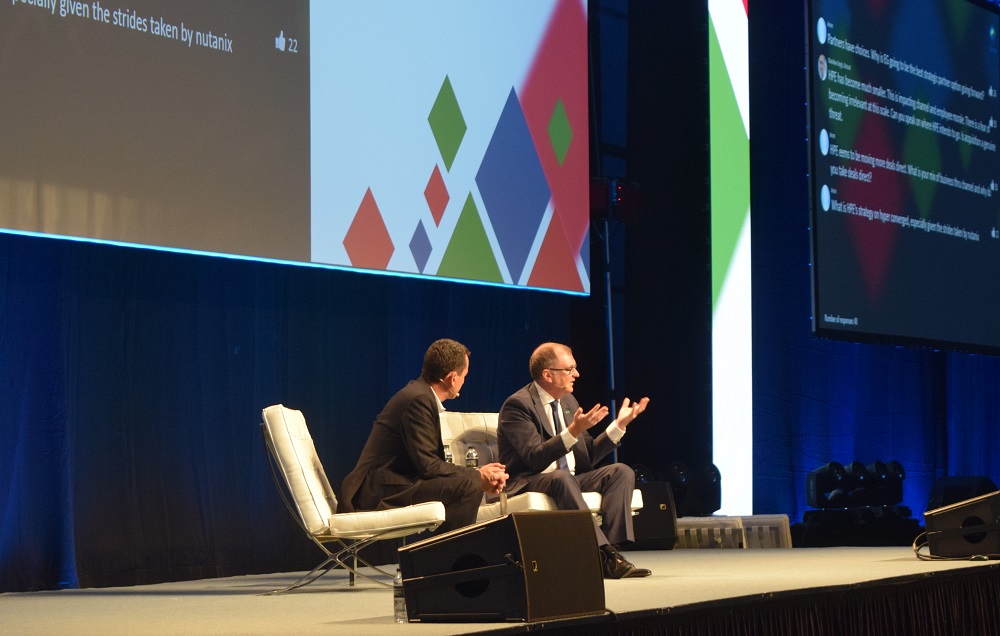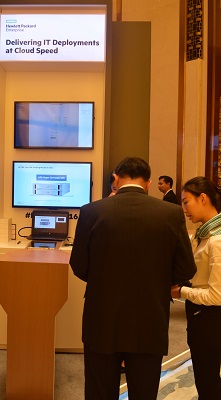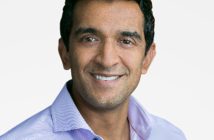
STEVE BRAZIER INTERVIEWS PETER RYAN, CHIEF SALES OFFICER, ENTERPRISE GROUP, HEWLETT PACKARD ENTERPRISE
 Peter Ryan – If you look around the world, every industry, of every size, every customer, every government, the tastes of consumers, and every part of the world is changing dramatically. Digital transformation is happening everywhere and you have a choice. I have said this to our partners recently, at our Global Partner conference: you have a choice to make: to disrupt or be disrupted. I don’t think there is an option to just sit still; which is why, what you have seen from Hewlett Packard Enterprise in the last 12 months, is that we are very decisive about the choices we have made, allowing us to be competitive and successful, and to help our partners and our customers as they go through these transformations.
Peter Ryan – If you look around the world, every industry, of every size, every customer, every government, the tastes of consumers, and every part of the world is changing dramatically. Digital transformation is happening everywhere and you have a choice. I have said this to our partners recently, at our Global Partner conference: you have a choice to make: to disrupt or be disrupted. I don’t think there is an option to just sit still; which is why, what you have seen from Hewlett Packard Enterprise in the last 12 months, is that we are very decisive about the choices we have made, allowing us to be competitive and successful, and to help our partners and our customers as they go through these transformations.
Steve Brazier – What areas are being targeted by HP?
Peter Ryan – In the news, you may have seen that we have announced that in the last 12 months, after the separation of HPE, there has been doubts emerging about the enterprise business. This includes the software business, Micro Focus, which leaves us with a very focussed strategy around secured micro-IT around the intelligence edge, around services that are required to help our customers and partners do the transformations that are needed there. So, I think, regarding infrastructure, we see ourselves as a critical player in the ecosystem that can drive transformation forward.
Steve Brazier – You have sold off the managed services business, but am I right in saying you still have a big services team?
Peter Ryan – Yes, that’s right. When you make announcements, people interpret them using their own experience. To be very specific, what we have done is – our enterprise services was focused on business outsourcing, IT outsourcing and application maintenance and what we have said to support that strategy around the secure hybrid IT Intelligent edge is that we need a different type of service to be successful. Today we have over 22,000 services staff within the company, which is still a reasonably sized workforce. But our strategy has always unashamedly been to partner meaning we are part of the ecosystem. We feel that our new strategy will bring our services to bear and drive transformation, encompassing all of the services from our partners, whatever size and shape of business they are.
Steve Brazier – Given all the recent changes, particularly spin-mergers, can you now tell us what your strategy is going forward?
Peter Ryan – We have a few basic beliefs and I think that we have been very solid on this, so we have a strong belief that hybrid IT will win. The way IT will be delivered will be a combination of public, private and traditional services. Some people will run their IT themselves, while others will have third-parties manage it for them. Our aim is to make hybrid IT as simple as possible. We also anticipate explosive growth at the edge – the edge for us is campus, mobility and the industrial Internet of Things (IoT). I think a lot of applications will emerge in that space. Furthermore, we believe that HP will power this intelligent edge. The third platform for the strategy really is that we have the ability and the competence to execute the transformations that are required, leading us back to our services capability to transition the partnership and the partner ecosystems.
Steve Brazier – HPE has become much smaller. Is this impacting channel and employee morale and is there a fear of becoming irrelevant? Can you explain where HPE intends to go and whether this is a real threat?
Peter Ryan – If you look at HPE, we are a $28 billion company. In Asia alone, 80% of our business goes through our channel partners. In terms of relevance, we are a strong global player, currently number one or two in every single category that we operate in. So our relevance is punctuated by those statistics. In terms of the spin-merger activity, the real value is in the channel. The things that we are spinning and merging are things that are enterprise services – most people in the channel worry about that overlap of services capability, especially as people become service providers and managed service providers. So, this can only be seen as fantastic news for the channel. Honestly, we you look at the software element, the core software assets we maintain in hybrid, the edge and Aruba create incredible opportunities for the channel and speak to the numbers on a global basis.
This market is now worth $250 billion, while we are a $28 billion company, so there are plenty of opportunities. So, if the partner wants me to come along and boost morale, I am happy to do it and rally the troops.
Steve Brazier – Isn’t part of the bigger question about growth? Did you recently have your investors’ meeting and partners’ meeting? Did you share some guidance about whether the company will grow next year and what can you share?
Peter Ryan – The guidance we gave last week is that there is some pressure on traditional business while other aspects are showing massive growth. Flash, for example, on a worldwide basis, this business grew last quarter by 44%. I think we are the only one of the top five vendors that has grown our Flash business for the last 10 consecutive quarters. Here in Asia, with Phil and his team, with two to three times the market, it’s a fantastic opportunity. In high performance computing, we are a global leader. It’s an aggressive market worth $11 million and it’s growing between 7% and 8%. We have cemented ourselves in with the recent acquisition of SGI, which we will complete soon. So, I think we have pockets of great growth. The great thing for the channel is our install base. All of these pockets of growth give us a chance, together, to continue to grow revenue, profits, improve cash flow, but also to increase revenue that is stickier, since one of the things we are seeing as we look at growth is, as consumption models change around hybrid IT, people want to pay as they go. Everything is being delivered as a service, and everything is a utility. We are finding that our HPE financial services business is giving our channel partners a great new stream of income and margin, but also allows us to manage the install base in a better way. So, we’ve hit all our targets since Meg Whitman has been leading the company. I think we have a pretty good track record and the analysts have gone away, reassured from the information we shared.
Steve Brazier – From what you’ve said, you have a strong balance sheet and seem to be focused on growth, so might there be more acquisitions in the near future?
Peter Ryan – There is clearly a number of use cases emerging in the current market. Our perspective is that if you are going to go through a massive transformation of the core categories in the marketplace, and if customers are facing massive transformation, if there are consolidation opportunities, if you have to reinvent some of your business streams going forward, then you need to be agile, nimble and flexible. One of the primary things that will enable you to do that and take advantage of the opportunities is, you have to have a strong balance sheet, a strong cash flow and strong profitability. By having a lot of cash on the balance sheet, you become an incredibly strong business going forward. So that is what we have created with the work we have done from a corporate basis. In terms of acquisitions, we have said that we are going to look at both organic and inorganic roots. Aruba Networks, which we acquired last year, has honestly been a gift from the gods. In many ways, it is a fantastic driver of growth. We knew it was great when we acquired it, but the areas of business it is opening up for us has been phenomenal and the sales energy that has come with that team has been fantastic. So, we like that and we like what SGI will bring as well. We like the Arista Networks partnership, which shows that it’s not only about acquisitions – it’s also about who we partner with. We are also working with Docker on the container side of things. If you think about the new style of virtualisation you get workload portability in a hybrid world, so we are going to look at all options, but the great thing about our situation is that we are one of the few companies that can explore other options because we have a strong financial grounding to be able to do it.




